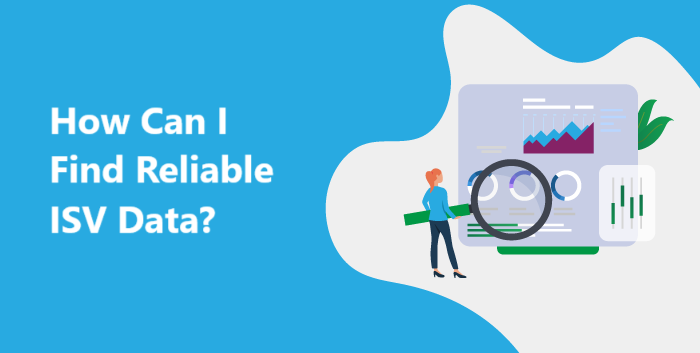As a business owner, one of your core functions is to make informed decisions. And to do that, you need to gather accurate and up-to-date information. So whether you’re trying to assess a new business opportunity, understand your competition, find the right price point for your product, or simply get to know your customers better, information gathering is a critical part of the process.
Here are seven forms of information gathering you can use along with tips on how to make the most of each one:
-
Google Analytics
Almost every business has a website these days – and if you do, you need to use Google Analytics. This free tool provides insights into your website traffic, including where your visitors are coming from, what pages they’re looking at, and how long they stay on your site.
This information is extremely valuable when making decisions about your website and the efficiency of your marketing strategy. For example, if you see that most of your visitors are coming from a certain country or city, you can adjust your targeting accordingly. Or, if you notice that people are searching and spending a lot of time on a particular page or content on protecting credit card information, you can create more content around that topic.
Google Analytics can initially seem daunting, but once you get the hang of it, it’s an incredibly useful tool for gathering information about your customers.
-
Social Listening
Social listening can help contribute to creating an effective communications strategy by focusing on what consumers are saying on social media platforms. It involves monitoring conversations and posts about your brand or industry on social media sites like Twitter, LinkedIn, and Facebook. Furthermore, this type of information gathering is extremely useful in understanding what people are saying about your brand and your industry as a whole.
There are a few different ways you can go about social listening. First, you can set up Google Alerts for key terms related to your business, which will send you an email any time someone mentions those terms on the web. Or, you can simply follow relevant hashtags on Twitter and Instagram to see what people are saying in real-time and jump in on conversations as they’re happening.
By monitoring your social media channels, you can quickly address any negative comments or reviews and learn from the positive ones.
-
Competitive Analysis
Your competitors aren’t just the businesses you’re trying to beat – they can also be a valuable source of information. By keeping tabs on what your competitors are doing, you can stay ahead of the curve and ensure you’re offering your customers the best possible product or service. Additionally, doing this can help you learn from your competitor’s mistakes and avoid making the same errors in your business.
You can conduct a competitive analysis in a few different ways. First, you can look at their website design and social media platforms to see what they’re saying and how they’re positioning themselves in the market. You can also sign up for their email list to better understand their marketing strategy. Or you can attend industry events and tradeshows to get a first-hand look at your competitors’ plans. Finally, don’t forget to talk to your customers – they can give you valuable insights into what they like and don’t like about your competitors.
Of course, you don’t want to copy everything your competitors are doing – but by keeping an eye on them, you can stay one step ahead.
-
Online Research
In today’s connected world, there’s no shortage of information at your fingertips – you just need to know where to look. However, when conducting online research, it’s important to use reliable sources and vet any information you find before using it in your business decisions. An excellent place to start is Google Scholar, which provides access to academic journals and other reputable sources.
Another great way to gather information online is to use social media platforms like Twitter and LinkedIn. These sites are full of professionals in every industry, making them valuable for insights and perspectives on current trends. Last but not least, don’t forget about good old-fashioned websites like government portals or industry-specific sites where you can find market research and a treasure trove of reliable data and resources.
Just remember to take everything you read online with a grain of salt – and verify any information before using it in your business.
-
Customer surveys
Customer surveys are a great way to get feedback on your products or services, as well as information about your target market. However, when creating a survey, you must keep it short and specific, as no one wants to spend hours filling out a lengthy questionnaire. You can also offer an incentive such as a discount or free shipping for completing the survey to increase response rates.
In addition, you can conduct customer surveys by using social media platforms such as Twitter or LinkedIn. Just post a question or poll and encourage your followers to weigh in. Or, you can use tools like SurveyMonkey or Google Forms to create surveys that can be embedded on your website or sent out via email.
-
Interviews
Similar to surveys, direct one-on-one Interviews are another great way to gather in-depth information, where you can ask open-ended questions that allow interviewees to share their thoughts and experiences. For instance, during an interview, you can ask your customers about their experience with your product or service, what they like or don’t like, and what you could do to improve the overall customer experience. You can also interview your employees about their job satisfaction, the types of leaves they would like to see offered, or how they think the company could operate more efficiently. It is great to interview employees who have customer service roles because the information they gather handling inbound inquiries or complaints can yield highly valuable insights.
You can also use interviews to gather information from experts in your industry to get insights into current trends, predictions for the future, or any potential challenges your business might face.
Keep in mind that it’s essential to come prepared with a list of questions and give the interviewee ample time to answer each question thoughtfully. But don’t be afraid to go off script if the conversation takes an interesting turn – you never know what you might learn.
-
Focus Groups
Focus groups are similar to interviews, but they involve a small group of people (usually around six to ten) who are brought together to discuss a specific topic. It is an effective way to gather feedback on a new product or service and gauge customer reaction to potential changes in your business.
If you’re going to organize a focus group discussion, it’s vital to select participants who are representatives of your target market. Also, you must have a moderator who can keep the conversation on track.
You can conduct focus groups in person or online. If you opt for an in-person focus group, you’ll need to find a neutral location to host the discussion and provide refreshments for participants. For an online focus group, you can use a tool like Zoom.
Wrap Up
In business, the more information you have, the better you’ll position your company for success. So take advantage of these various ways to gather information and choose the method that best suits your needs.
And once you’ve gathered all this information, it’s time to sit down and analyze it. Look for patterns and trends, and make a note of any areas where you have an opportunity to improve. Armed with this knowledge, you can make changes to your business that will help you better serve your customers and achieve your goals.









